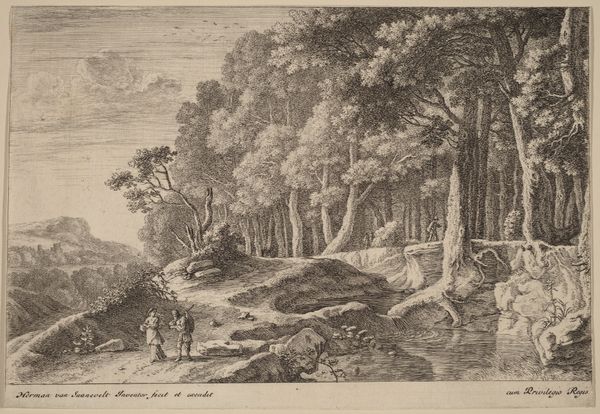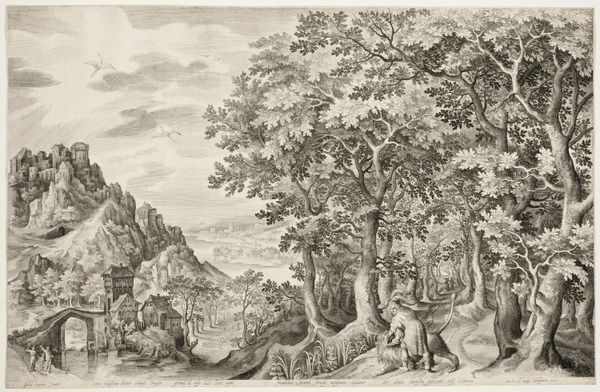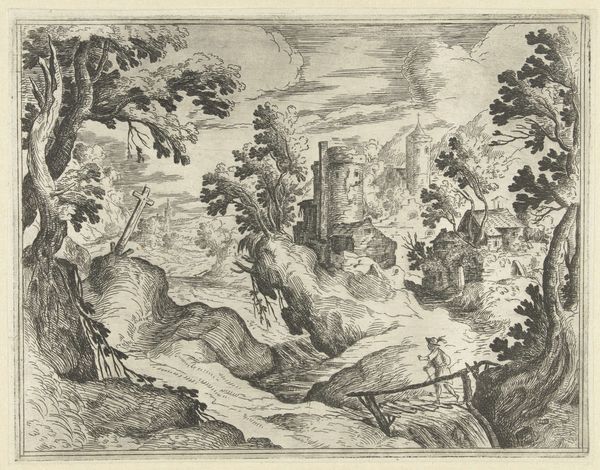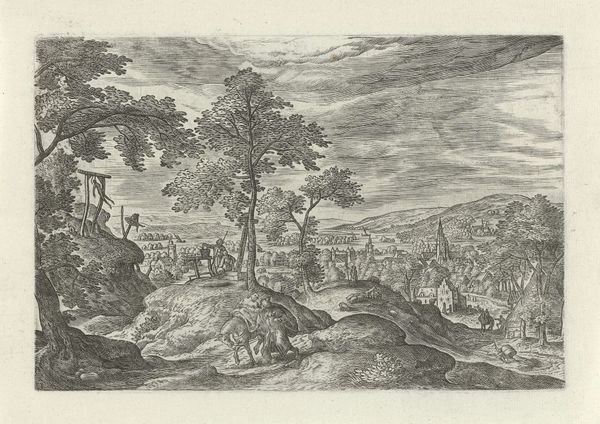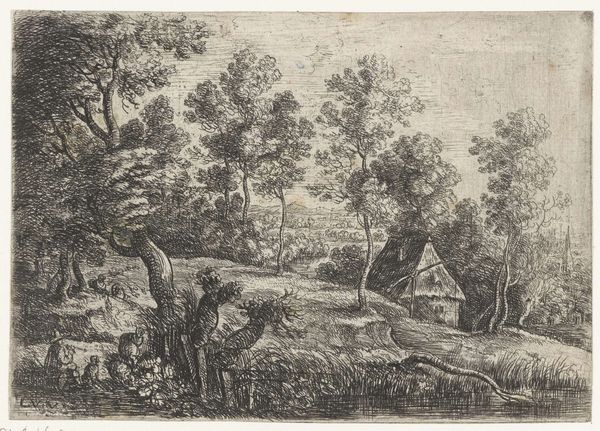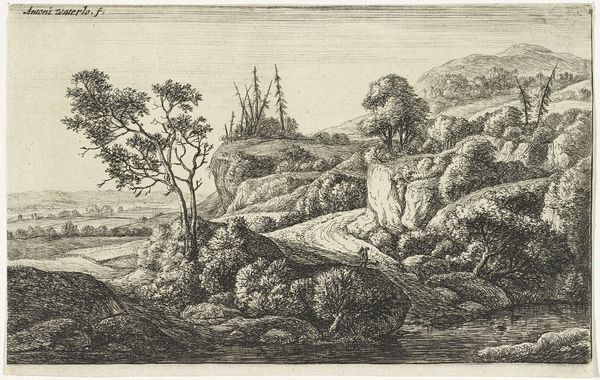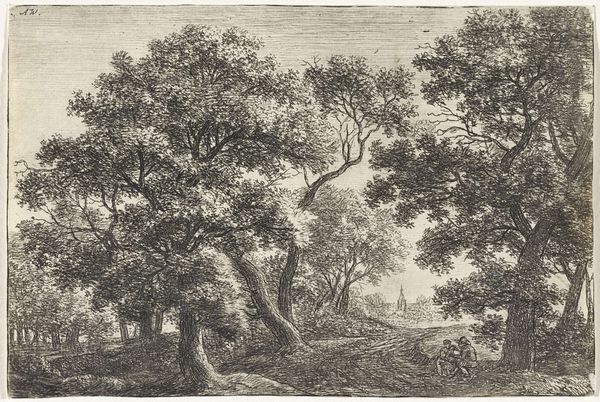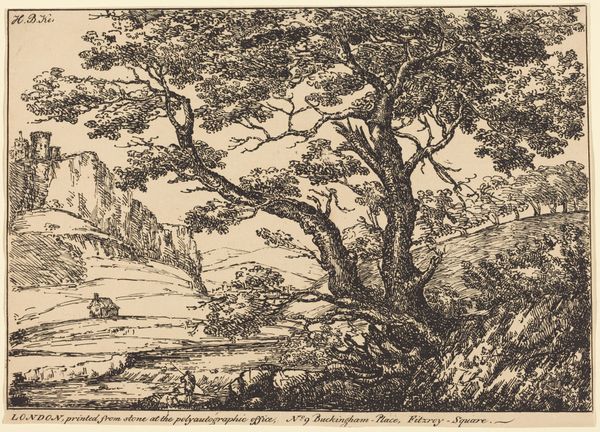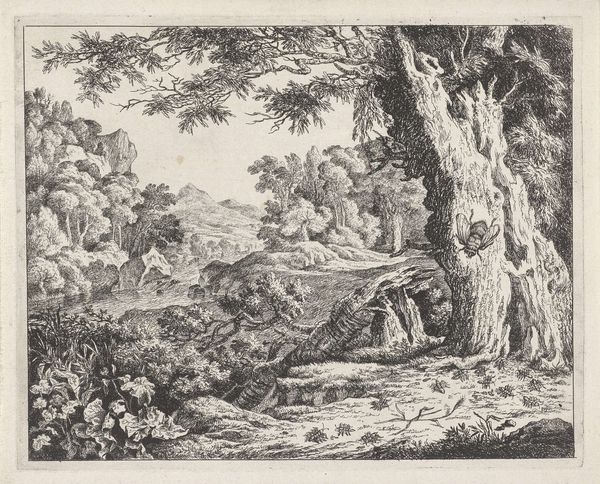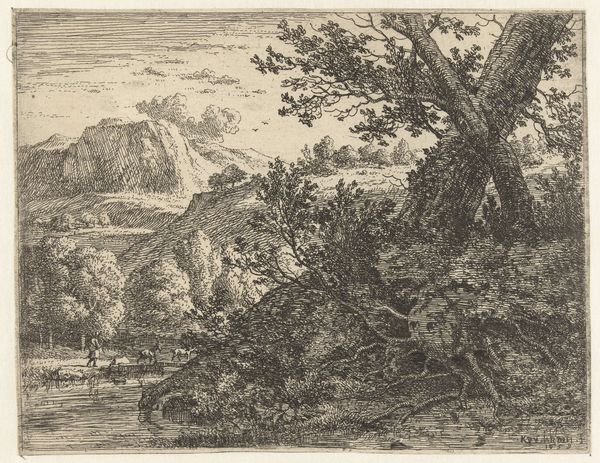
print, engraving
#
narrative-art
#
dutch-golden-age
# print
#
old engraving style
#
landscape
#
figuration
#
engraving
Dimensions: height 155 mm, width 204 mm
Copyright: Rijks Museum: Open Domain
Curator: This print, “Wandelaars bij een beek,” or “Wanderers by a Stream,” comes to us from the Dutch Golden Age, dating sometime between 1633 and 1679. We don’t know the hand behind it, but the piece calls to mind the aesthetic environment of the period and has been rendered as an engraving. Editor: Immediately, I’m drawn to the texture. The density of lines creates a striking contrast between the delicate, almost feathery foliage and the rougher, more imposing rocks and the subtle yet powerful way light filters through the trees. It feels very inviting. Curator: It certainly aims to draw the viewer into an almost idealized natural setting, doesn't it? If you notice the arrangement of figures in the artwork, we can perceive a movement of travelers, each existing in their respective planes as they proceed into a forested wilderness. The couple in the foreground perhaps symbolizes a specific ideal of domesticity, contrasting sharply against other figures who appear to be more solitary—wandering deeper still within the wood. It begs the question, what kind of cultural values does this imply? Editor: It seems like it is suggesting the forest isn't merely scenery, but a place charged with meaning, perhaps symbolizing a space between society and something untamed. Considering the era, was this type of landscape and allegory a conscious political or social statement? And who might it have been made for, that would react to it strongly? Curator: Those are very astute questions. During the Golden Age, landscapes started acquiring deeper symbolic weight and could embody concepts of nationhood, prosperity, and the relationship between humanity and the natural world. This print may well have functioned within the visual culture of its time as a testament to those emergent social ideals. Perhaps these ‘Wanderers’ reflect, not just people on a path, but an entire society charting its own course. Editor: Thinking about its potential meanings has added a layer of engagement for me. It's a striking example of how we construct imagery and project communal ideas onto the landscape we observe. Curator: And for me, too, contemplating this piece highlights the evolving roles that art continues to play in portraying the dynamics of power and collective ideals across history.
Comments
No comments
Be the first to comment and join the conversation on the ultimate creative platform.
